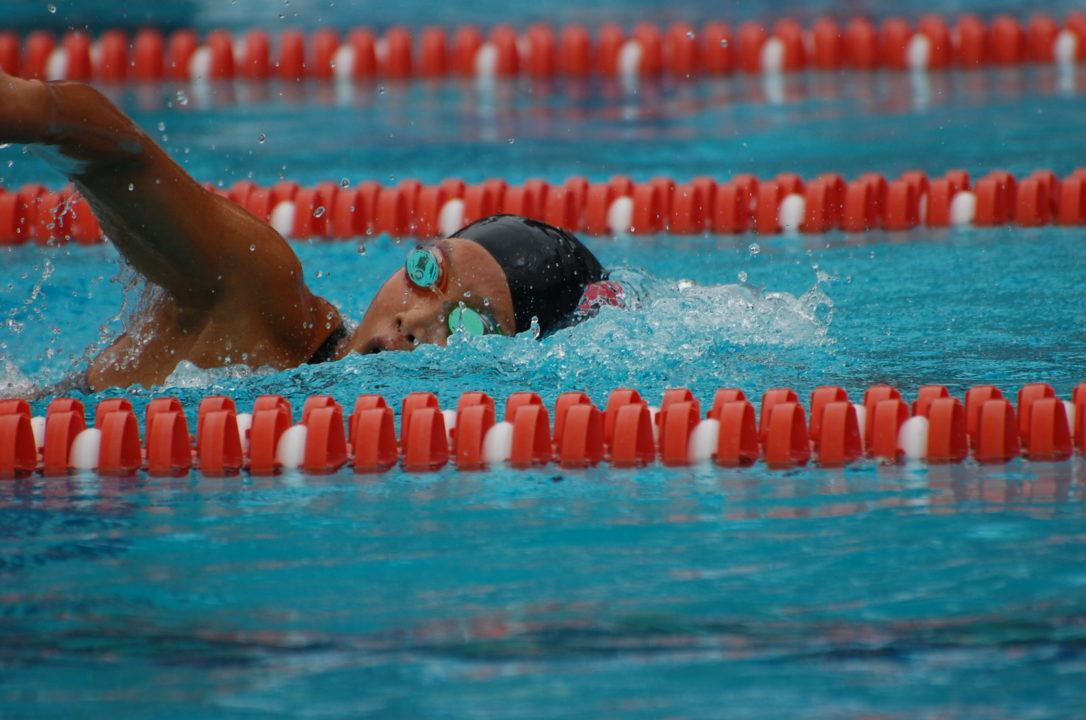2016 California Interscholastic Federation Swimming & Diving Championships
- May 20-21, 2016
- Location: Clovis Olympic Swim Complex
- Psych Sheet: Available here
- Championship Central
With the last of its section meets in the books, the California Interscholastic Federation released the psych sheets for its 2nd annual CIF championship meet. The state meet will take place next Friday and Saturday, May 20-21, in Clovis.
Although a number of California high school swimmers have elected not to compete in the state championship meet, as they have turned their focus to 2016 U.S. Olympic Trials at the end of June, a number of big names will make the meet competitive. Maxime Rooney and Grant Shoults will not be in Clovis, but among the big names in California swimming who will be there are: Palo Alto junior Alex Liang (#1 in 200 free and 500 free); Los Altos senior Albert Gwo (#1 in 50 free and #2 in 100 free); Oak Ridge junior Bryce Mefford (#1 in 100 fly and #5 in 200 free); Aptos senior Christopher Staka (#1 in 100 back and #4 in 100 free, and San Ramon Valley senior Hank Poppe (#1 in 100 breast and #7 in the 50 free).
Absent from the girls’ meet will be many of the big Southern California names such as sophomore Sam Shelton and the rest of the Santa Margarita squad, Woodbridge junior Kate Krolikowski, Edison sophomore Nora Deleske, and JSerra junior Katie Glavinovich, but senior Kenisha Liu of Ayala (#1 in 200 free, #1 in 100 free); Glendale junior Alexis Margett (#1 in 100 fly, #2 in 200 IM); as well as senior Emily Eastin (#6 in 100 fly, #5 in 100 back) and sophomore Elise Garcia (#2 in 50 free, #4 in 100 free) from Crean Lutheran, among others, will make the trip. Quite a few of Northern California’s top swimmers will be in attendance, such as: Presentation senior Chloe Isleta (#1 in 200 IM, #2 in 100 back), Menlo-Atherton sophomore Izzy Henig (#1 in 50 free, #1 in 100 free); Granite Bay freshman Chloe Clark (#1 in 100 back, #3 in 50 free); and Santa Clara junior Sophie Krivokapic-Zhou (#3 in 100 back, #5 in 100 fly).
CIF State Meet Qualifying Standards
As a reminder, the various California Sections may send swimmers and divers to the State Meet, using the following formula for each event:
- CIF Southern 5
- CIF North Coast 3
- San Diego 3
- CIF Sac-Joaquin 3
- CIF Central Coast 3
- CIF Central 2
- CIF Los Angeles 2
- CIF Northern 1
- CIF San Francisco 1
- CIF Oakland 1
At-Large Entries
Sections may enter additional competitors provided they have met or bettered the “At-Large” Automatic or Consideration standard for their event in their Section Meet finals that qualifies athletes for the CIF State Swimming & Diving Championships. In the event that there are not 40 automatic qualifiers, consideration times will be used to fill each event to 40 qualifiers/relay teams. “At-Large” AND Consideration qualifying times must achieved in Finals of the Section Championships.
Diving: No At Large Qualifiers. Each section will get one additional entry for diving.


Access denied to Psyche Sheet?
I think it’s safe to say that California– even without a lot of its stud HS swimmers– fields the deepest and fastest state championship in the US.
That’s because California has 39 million people and of course is going to have a larger pool of kids for high school swimming but I noticed national relay records are done by smaller states like Indiana sometimes. California may not be the largest state in 20 years since Texas is growing about 2 million more people per decade cheaper housing and more opportunities for careers in places like Austin and Dallas.
That’s because California has 39 million people and of course is going to have a larger pool of kids for high school swimming but I noticed national relay records are done by smaller states like Indiana sometimes. California may not be the largest state in 20 years since Texas is growing about 2 million more people per decade cheaper housing and more opportunities for careers in places like Austin and Dallas.
But who wants to live in texas
Texans!
National Records for relays coming from smaller places is no surprise because on a good club team all of the swimmers may be going to the same high school, while in California a club teams swimmers may be spread out into 10 different high schools.